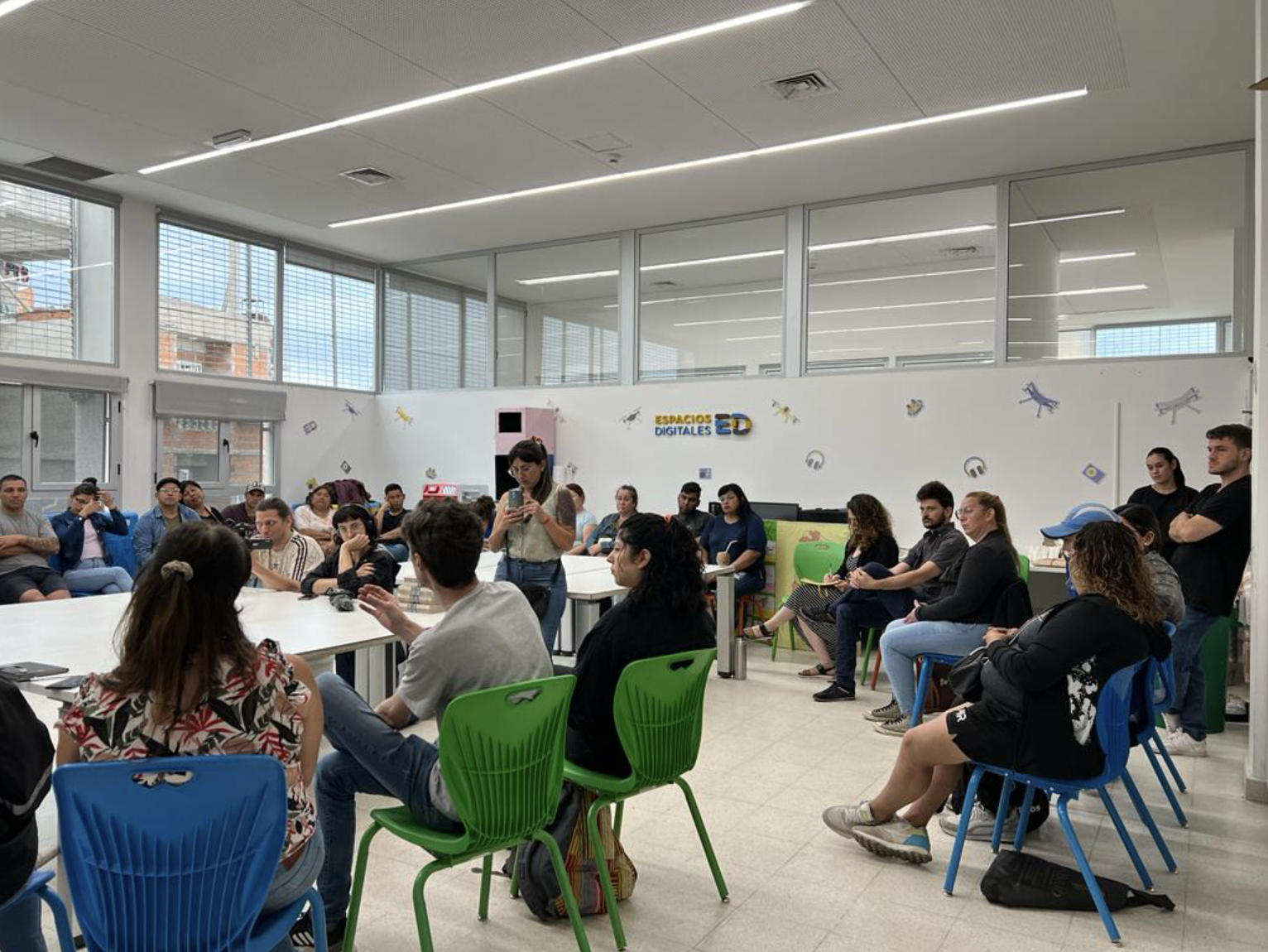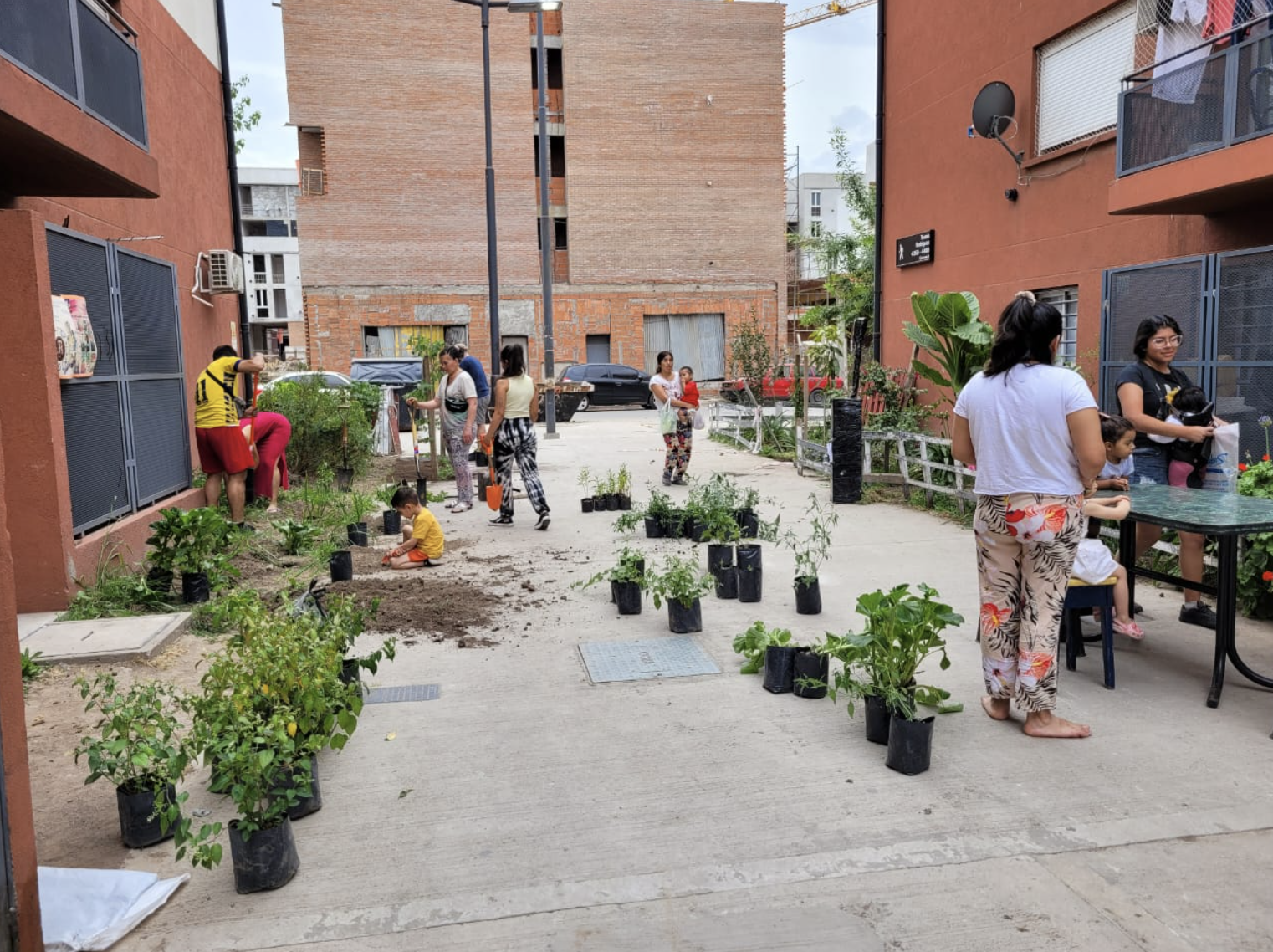Addressing Urban Heat in Buenos Aires: Community-Led Solutions in Barrio 20
I n the heart of Buenos Aires, the residents of Barrio 20, an informal settlement located just 12 km from the city center, face a growing climate threat—intensifying heat waves. With the neighborhood’s lack of green spaces, widespread use of impermeable surfaces, and minimal access to cooling infrastructure, the summer heat is particularly harsh. Coupled with the ongoing reurbanization process, Barrio 20’s population of 30,000 must navigate not only a shortage of housing and secure land tenure but also a future shaped by rising temperatures. Until recently, environmental considerations were an afterthought in urban planning here. But with climate change now front and center, the community has embraced a transformative approach to protect their homes and streets from the extreme heat.
Community-Led Solutions with a Climate Focus
Since 2021, the Transformative Urban Coalitions Project has been working with the community to integrate nature-based solutions (NbS) into Barrio 20’s reurbanization. At the heart of this effort is the Urban Lab, a participatory platform where residents, social organizations, and government agencies come together to co-design climate interventions. “The Urban Lab is more than just meetings,” says Florencia Almansi, a researcher involved in the project. “It’s a space where neighbors share their experiences, government officials listen, and together, we figure out what works for this community.”
One of the standout features of this project is the participatory design process, which includes the input of local women, youth, and civil society organizations. “We’ve been part of every step,” shares one resident, proudly discussing their involvement in designing interventions that include tree planting, green walls, and creating shaded communal spaces. What started as a top-down reurbanization process has evolved into a community-led transformation where the voices of those living in Barrio 20 drive the change.

An Urban Lab meeting
Tangible Impact
The impact of these initiatives is already being felt across the neighborhood. New trees and shaded areas have reduced the harshness of the summer heat, while residents have reported a marked improvement in comfort. “Before the project, our streets were unbearable during summer. Now, with more shade and greenery, it’s not just cooler—it’s more beautiful,” says a local community leader. In fact, 60% of residents in areas where these interventions took place have noted significant increases in comfort.
The project has also provided much-needed employment opportunities for local cooperatives, ensuring that marginalized groups within Barrio 20 are not just beneficiaries but active participants in the neighborhood’s transformation. These cooperatives have been instrumental in building and maintaining the interventions, transforming the streets with greenery and actively involving neighbors in nurturing their revitalized surroundings.

Community members gather to work on this green intervention in Barrio 20
Scaling Beyond Barrio 20
The success in Barrio 20 hasn’t gone unnoticed. Other cities, including Rosario, are keen to replicate this innovative model of integrating climate action into urban upgrading processes. The project’s co-designed NbS pilot interventions have dispelled myths about the cost and complexity of applying climate solutions in informal settlements.
For the people of Barrio 20, the combination of community-driven leadership and climate resilience has transformed their neighborhood—and their future. “We now understand that change starts with us,” says a youth leader from the area. “This is about more than just trees or shade. It’s about building a community that’s ready for the challenges ahead.”
With more than €271,000 invested in physical interventions and awareness-raising actions, Barrio 20 is paving the way for a new type of urban development—one where climate action and local leadership go hand in hand. As the city scales these efforts to new neighborhoods, Barrio 20’s story serves as a powerful reminder that communities, when given the tools and trust, are the best architects of their own resilience.
The ideas presented in this article aim to inspire adaptation action – they are the views of the author and do not necessarily reflect those of the Global Center on Adaptation.